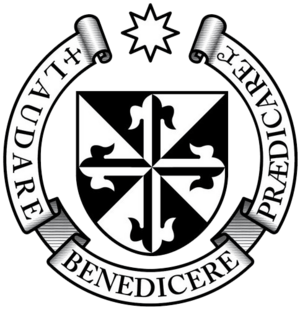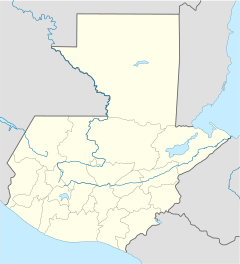San Martín Jilotepeque facts for kids
Quick facts for kids
San Martín Jilotepeque
|
|
|---|---|
|
Municipality and town
|
|
| Country | |
| Department | |
| Area | |
| • Total | 144 sq mi (374 km2) |
| Population
(2018 census)
|
|
| • Total | 73,469 |
| • Density | 508.8/sq mi (196.44/km2) |
| Time zone | UTC+6 (Central Time) |
| Climate | Cwb |
San Martín Jilotepeque is a town and a municipality in the Chimaltenango department of Guatemala. In 2018, about 10,812 people lived in the town. The area was sadly known for a bus accident in 2013.
Contents
A Look Back: History of San Martín Jilotepeque
How Towns Were Formed: The Doctrine System

After the Spanish took control, they wanted to teach the native people the Catholic faith. New settlements built by missionaries were called "Indian doctrines" or simply "doctrines". At first, the plan was for friars to teach Catholicism and Spanish. Then, these settlements would become regular church parishes, just like in Spain. People would then pay taxes to the church.
However, this plan did not work out. The Spanish king lost control over the religious orders. The missionaries only listened to their own leaders, not the Spanish government or local bishops. Once a doctrine was set up, the friars protected their own money interests. This meant the doctrines became Indian towns that stayed the same for a long time.
Friars could start doctrines wherever they wanted. The main goal was to eventually turn them into regular parishes. But in reality, these doctrines grew very large and were never handed over. They grew around the friars' monasteries. From there, friars would visit smaller settlements called "annexes" or "visit towns."
Doctrines had three main features:
- They were independent from outside control, both from the church and the government.
- A group of friars ran them.
- They had many smaller towns connected to them.
Having a group of friars in charge was important. It made sure the system continued smoothly even if one friar passed away.
In 1638, the Order of Preachers divided their large doctrines. This was because these doctrines brought them a lot of money. They grouped them around their six main monasteries. The San Martín Jilotepeque doctrine was placed under the Santiago de los Caballeros de Guatemala monastery.
| Monastery | Doctrines |
|---|---|
| Santiago de los Caballeros de Guatemala |
|
Moving the Capital After the 1773 Earthquake
In 1773, the Santa Marta earthquakes caused a lot of damage to Santiago de los Caballeros de Guatemala. This led to the capital city being moved for the third time. In 1776, the Spanish Crown ordered the capital to be moved to a safer place. This new place was the Valley of the Shrine, where Guatemala City is today.
The new city was named Nueva Guatemala de la Asunción. Its patron saint is Our Lady of the Assumption. The old, damaged city of Santiago de los Caballeros was ordered to be left empty. However, not everyone left. It became known as La Antigua Guatemala, meaning "the Old Guatemala."
A royal order on July 21, 1775, allowed the city to move to the "Virgin valley." This was a final command that everyone had to follow. People slowly started to move in December of that year. To build the new city, materials were taken from the old, abandoned churches in Santiago de Guatemala.
However, some people did not move to the new city. Instead, they settled in San Martín Jilotepeque and have lived there ever since.
The 1976 Guatemala Earthquake
Sadly, San Martín Jilotepeque was one of the towns hit hardest by the 1976 Guatemala earthquake. The town was almost completely destroyed. Only the old colonial fountain in the main square survived the disaster.
Across the country, the earthquake affected an area of about 30,000 square kilometers. About 2.5 million people were impacted. Around 23,000 people died, and 77,000 were seriously hurt. Many hospitals were destroyed, and other buildings were badly damaged.
Climate
San Martín Jilotepeque has a subtropical highland climate. This type of climate is known for its mild temperatures.
| Climate data for San Martín Jilotepeque (1991–2020) | |||||||||||||
|---|---|---|---|---|---|---|---|---|---|---|---|---|---|
| Month | Jan | Feb | Mar | Apr | May | Jun | Jul | Aug | Sep | Oct | Nov | Dec | Year |
| Record high °C (°F) | 25.3 (77.5) |
28.6 (83.5) |
29.0 (84.2) |
30.6 (87.1) |
29.6 (85.3) |
25.4 (77.7) |
25.6 (78.1) |
26.6 (79.9) |
25.8 (78.4) |
25.6 (78.1) |
24.2 (75.6) |
26.4 (79.5) |
30.6 (87.1) |
| Mean daily maximum °C (°F) | 21.6 (70.9) |
22.4 (72.3) |
23.3 (73.9) |
23.8 (74.8) |
23.2 (73.8) |
22.4 (72.3) |
22.2 (72.0) |
22.3 (72.1) |
22.2 (72.0) |
21.9 (71.4) |
21.5 (70.7) |
21.5 (70.7) |
22.4 (72.3) |
| Daily mean °C (°F) | 16.8 (62.2) |
17.8 (64.0) |
19.0 (66.2) |
20.0 (68.0) |
19.9 (67.8) |
19.3 (66.7) |
19.1 (66.4) |
19.1 (66.4) |
18.9 (66.0) |
18.5 (65.3) |
17.6 (63.7) |
17.2 (63.0) |
18.6 (65.5) |
| Mean daily minimum °C (°F) | 9.5 (49.1) |
9.6 (49.3) |
10.2 (50.4) |
11.6 (52.9) |
12.6 (54.7) |
12.6 (54.7) |
12.5 (54.5) |
12.6 (54.7) |
12.5 (54.5) |
12.2 (54.0) |
11.1 (52.0) |
9.9 (49.8) |
11.4 (52.5) |
| Record low °C (°F) | 3.1 (37.6) |
3.0 (37.4) |
4.0 (39.2) |
6.0 (42.8) |
7.2 (45.0) |
6.7 (44.1) |
6.9 (44.4) |
6.7 (44.1) |
3.7 (38.7) |
3.7 (38.7) |
1.6 (34.9) |
2.0 (35.6) |
1.6 (34.9) |
| Average precipitation mm (inches) | 2.0 (0.08) |
1.9 (0.07) |
9.9 (0.39) |
42.4 (1.67) |
166.0 (6.54) |
233.6 (9.20) |
179.4 (7.06) |
208.2 (8.20) |
250.3 (9.85) |
169.9 (6.69) |
33.4 (1.31) |
9.9 (0.39) |
1,306.9 (51.45) |
| Average precipitation days (≥ 1.0 mm) | 0.6 | 0.6 | 1.3 | 3.6 | 11.7 | 16.8 | 14.5 | 16.4 | 19.4 | 14.1 | 4.3 | 1.4 | 104.7 |
| Source: NOAA | |||||||||||||
Where is San Martín Jilotepeque?
 |
Joyabaj, municipality of Quiché Department |  |
||
| San José Poaquil and San Juan Comalapa, municipalities of Chimaltenango Department | San Juan Sacatepéquez, municipality of Guatemala Department | |||
| San Juan Comalapa, municipality of Chimaltenango Department | Zaragoza and Chimaltenango, municipalities of Chimaltenango Department |
See also
 In Spanish: San Martín Jilotepeque para niños
In Spanish: San Martín Jilotepeque para niños


